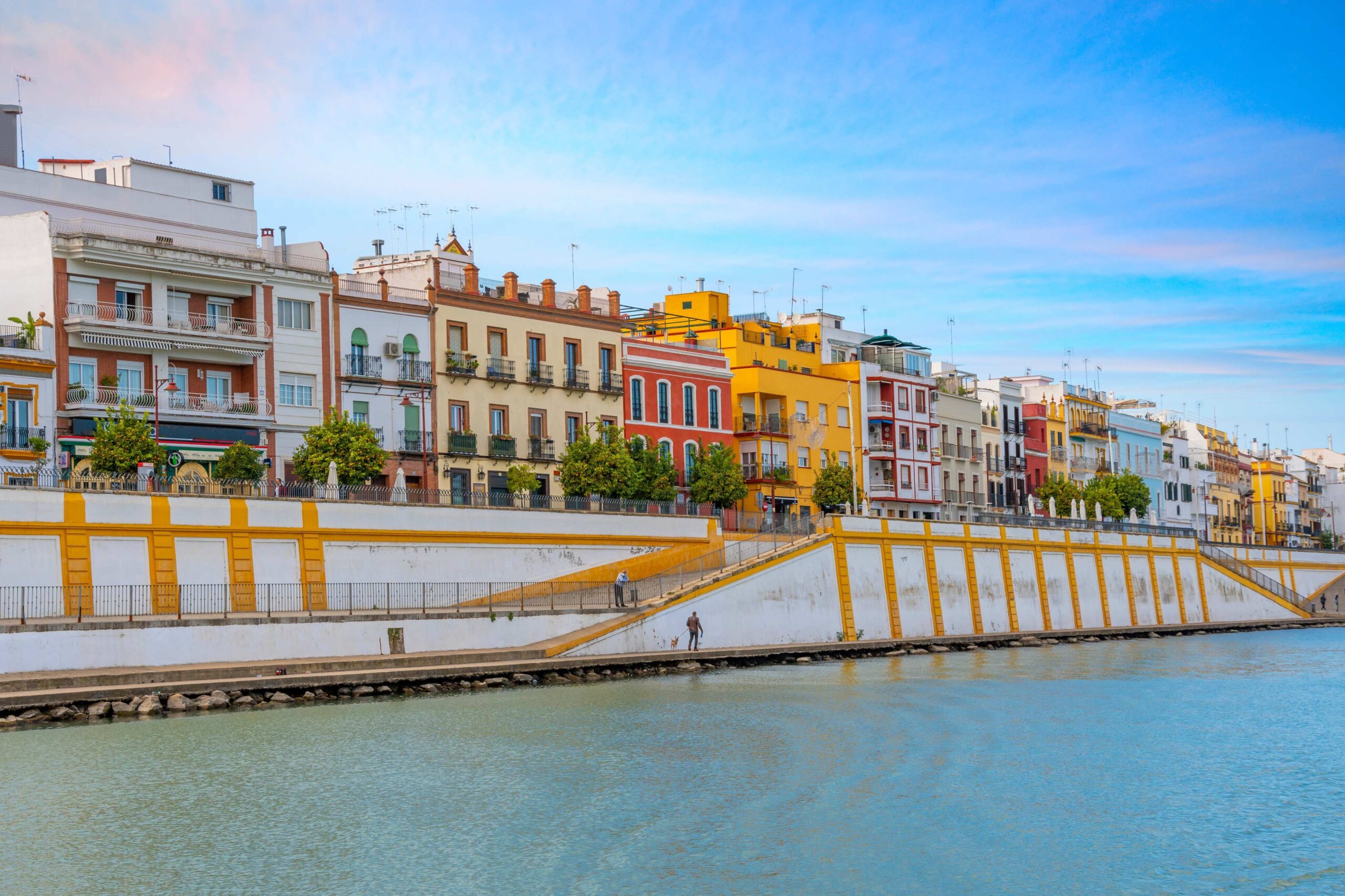Triana, the Soul and Tradition of Seville
If there’s a neighborhood that truly reflects the authentic character of Seville, it is undoubtedly Triana. Located on the opposite bank of the Guadalquivir River, facing the historic center of the city, this neighborhood has for centuries been home to artisans, sailors, and gypsies. Its history, architecture, and unique atmosphere make Triana a must-visit destination for anyone wanting to feel the heartbeat of the city.

History and Origins of Triana
Triana is one of Seville’s oldest neighborhoods, with roots tracing back to Roman times. According to some theories, its name may derive from the Trajani tribe, who settled in the area during the imperial period. Over the centuries, Triana has maintained its own character, distinguishing itself from the historic center with its narrow streets, cozy squares, and the authenticity of its people. During the Middle Ages and the Renaissance, Triana became a reference point for river navigation, shipbuilding, and pottery. Its ceramic workshops were famous for the quality of their tiles, many of which still adorn buildings in Seville and other Andalusian cities. This artisanal legacy remains one of the defining features of the neighborhood today.
During the Middle Ages and the Renaissance, Triana was a place of reference for river navigation, shipbuilding and pottery. Its pottery workshops were famous for the quality of their tiles, many of which still decorate buildings in Seville and other cities in Andalusia. This legacy of craftsmanship is one of the features that today define the identity of the neighbourhood.
What to See in Triana
Walking through Triana is like immersing yourself in its history and culture. Some of the must-see spots include:
- Triana Bridge (Puente de Isabel II): This iconic iron bridge connects Triana with Seville’s historic center and is one of the city’s most recognizable symbols. Strolling across it offers unique views of the Guadalquivir River and the surrounding historic buildings.
- Calle Betis: Along the riverbank, this picturesque street is full of bars, restaurants, and terraces, making it an ideal place to enjoy local cuisine while soaking in the neighborhood’s vibrant atmosphere.
- Capilla de los Marineros: A place of worship closely linked to Holy Week, where the Virgin of Hope Macarena, one of Seville’s most revered devotions, is venerated.
- Triana Market: This historic market offers an authentic experience with stalls selling fruits, vegetables, fish, and local products that reflect the everyday life of the neighborhood.
- Triana Ceramics: Many pottery workshops are still open, offering visitors the chance to see and purchase handcrafted pieces made using traditional techniques.
In addition, the neighborhood’s squares, such as Plaza del Altozano, and the churches and convents scattered throughout its streets make Triana a place where every corner tells a story.
Culture and Traditions
Triana is not just history and architecture; it is also the cradle of flamenco culture. The passion for singing, dancing, and guitar can be felt in every corner. Taverns, peñas, and flamenco venues allow visitors to enjoy live performances that capture the essence of Andalusian art.
The neighborhood also keeps its popular festivals alive, such as Holy Week, when processions fill the narrow streets with an atmosphere of emotion and tradition. Triana has successfully combined its rich past with an active cultural life, making it an appealing destination for both tourists and locals.
Gastronomy in Triana
Triana is also a culinary hotspot. Its bars and restaurants offer a wide variety of tapas and traditional Sevillian dishes, from fried fish (pescaíto frito) to game stews and rice dishes. Calle Betis and its surroundings are packed with bars with terraces, where visitors can enjoy a tapa while overlooking the river and listening to live music.
Experiences for Visitors
Visiting Triana means immersing yourself in a neighborhood full of life and authenticity. Walking through its streets, discovering artisan workshops, tasting its gastronomy, or attending a flamenco performance are just some of the experiences that make Triana an unforgettable destination. Additionally, its proximity to Seville’s historic center allows visitors to combine their trip with other city highlights, such as Seville Cathedral, the Giralda, or the Archivo de Indias. Seville Cathedralthe Giralda or the Archive of the Indies.
Where to Stay to Discover Triana
After a day exploring Triana, there’s nothing better than resting in a hotel that combines comfort and style. In this sense, Cavalta is an excellent choice. Located in the heart of Seville, this boutique hotel in Seville offers elegant and cozy rooms that provide the perfect retreat after a day of sightseeing in the neighborhood and city.
In addition, the hotel features a restaurant with pool in Seville, an ideal space to relax and enjoy local cuisine without leaving the property. Its strategic location allows guests to explore Triana on foot and discover all the secrets of the neighborhood, from its ceramic workshops to its most emblematic squares.
Whether for a cultural getaway, a romantic weekend, or a family visit, staying at Cavalta allows you to experience the essence of Seville without sacrificing comfort, elegance, or excellent gastronomy.
